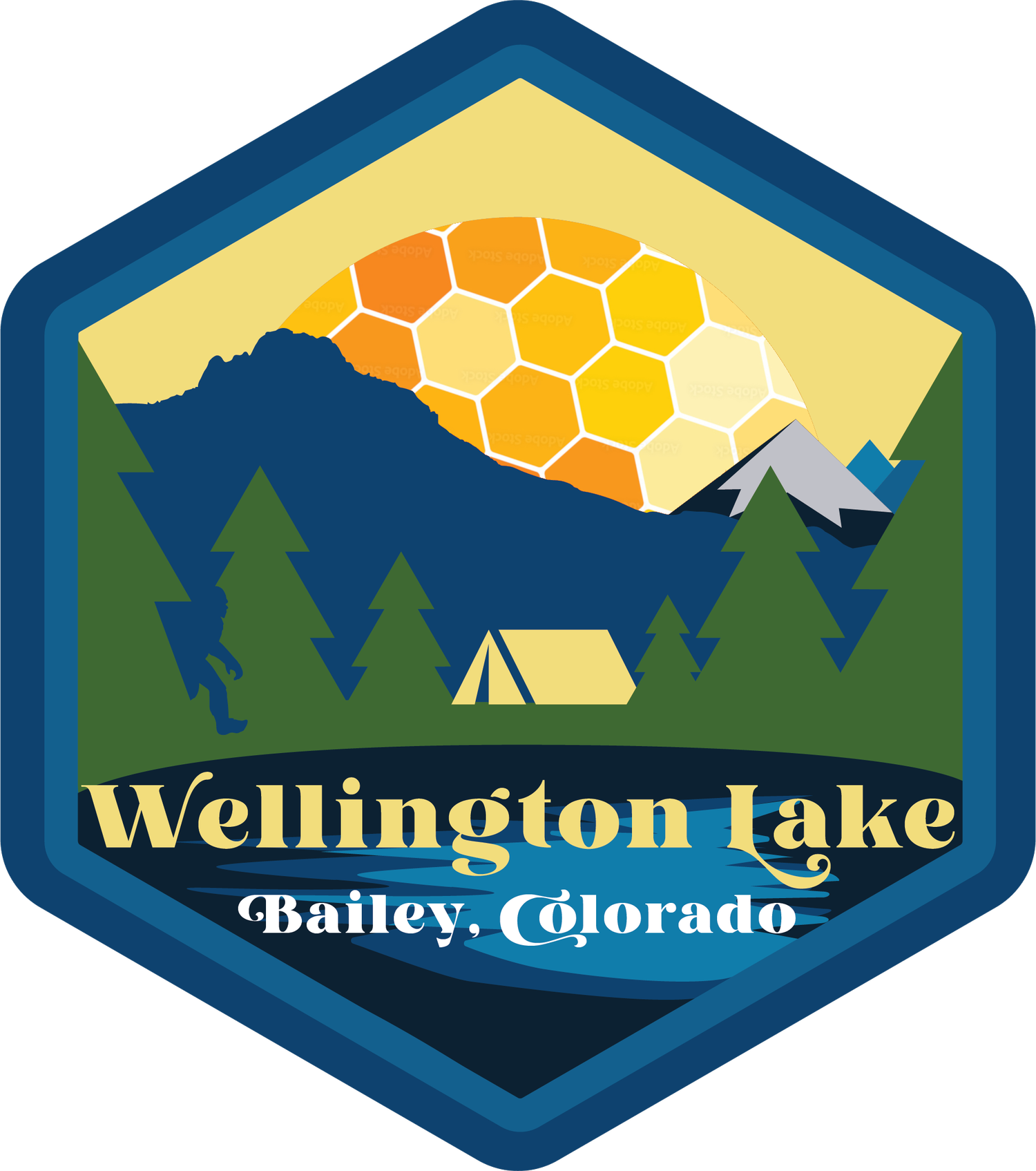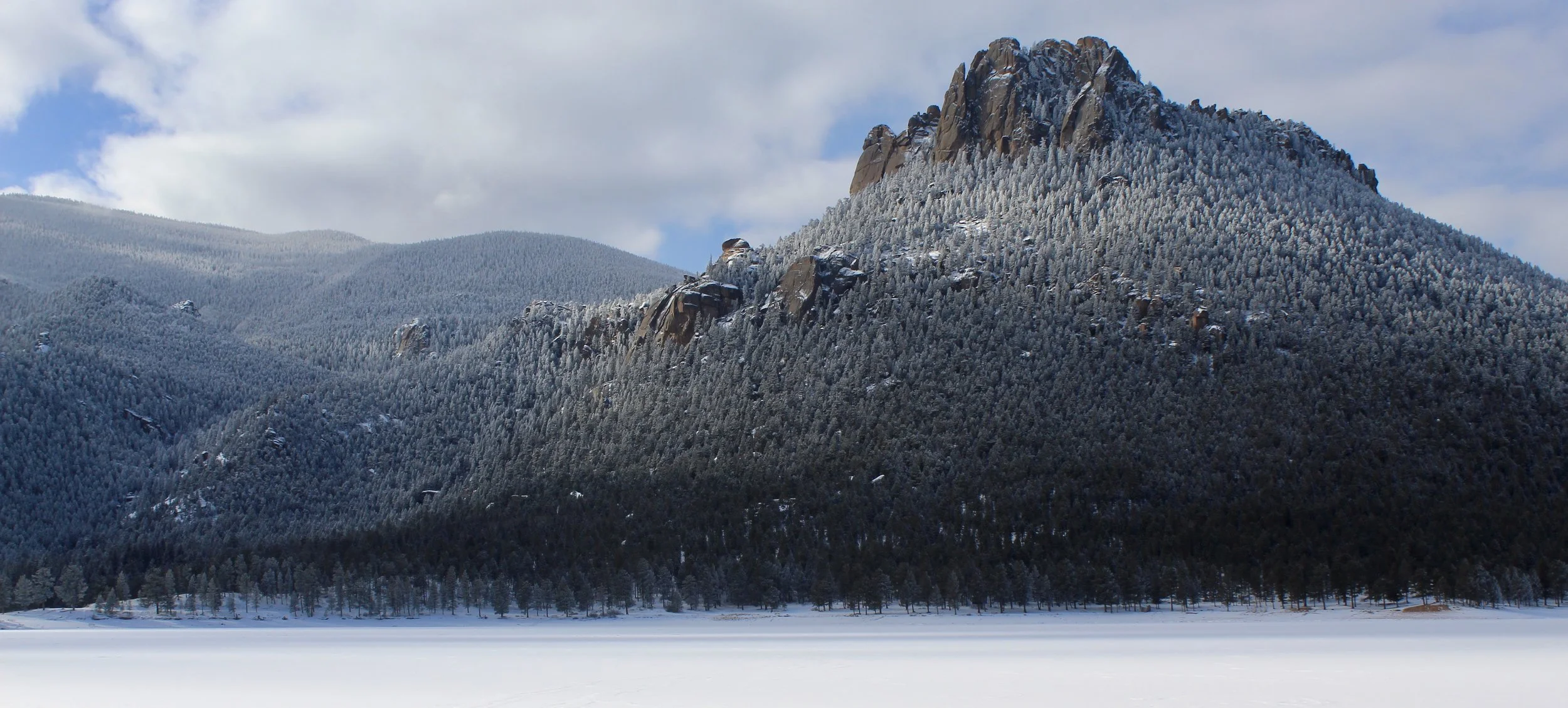Wellington Lake is a privately-owned reservoir which is open to the public for camping and day use. The Lake is owned by Wellington Reservoir Company and managed by a General Manager and Board of Directors.
History of the lake
The Railway arrives (1878)
As early as 1874, construction of a narrow-gauge railway, the Denver, South Park & Pacific, was underway along the South Platte river. It would eventually link Denver to towns across the continental divide where gold, silver and other minerals were being mined and brought out of the mountains. By June 1878, the railroad tracks reached the little settlements of Buffalo Creek and Pine Grove just east and north of “Higginson’s Hay Ranch”. Previously there had just been modest stage roads that ran between the small towns and homesteads in the area. With the arrival of the train, a new era was about to begin.
Castle Lake Resort is established (1890)
The new rail-line allowed Denver’s growing population to easily forsake the summer heat for the cool of the mountains – an allure that continues to this day! Mountain resorts for the city elite sprang up. In 1890, Harper Orahood, a Denver investor familiar with the Higginson’s scenic valley, arranged to buy the land and water rights from its owners - 400 acres for $14,000 - and with his partners, established the Castle Lake Resort Company. An earthen dam was built at the valley’s end, and the new reservoir stocked with trout. Existing dwellings were added to, new roads and ditches built, livestock, wagons and furniture purchased for the new resort.
Wellington Lake and Reservoir Company is created (1891)
The next year, John Wellington Nesmith, Orahood’s old friend and business partner, joined the venture. The dam was raised, the lake enlarged, and the fledgling company renamed The Wellington Lake and Reservoir Company. The Higginson home became the Wellington Hotel, small furnished cottages were available for rent at $10-$25 a month, and camping by the lake was free. Families might arrive by horse-drawn wagon and stay for several weeks, with fathers commuting to Denver by train. Cabins, some still standing, were built for the board members and a second hotel constructed. A fish hatchery was added, and hiking trails laid out along the western side, including the Waterfall Trail, which is still popular today.
Wellington Lake changes hands (1920-present)
A group of farmers in Brighton, north of Denver, acquired the existing company for its water rights in 1920, deeding the original partner and their descendants the lands around their cabins and perpetual access to the lake. In 1950, the dam was further raised, and the water level of the reservoir increased to 50 ft. A private campground was opened in the 1960s, and the lake became a trophy fishing location, a place for sailing regattas, swimming competitions and local festivals as well as providing camping areas for boy scout troops and summer youth challenge groups.
The Lake today
Today, Wellington Lake is known for its family-friendly camping and day-use. It is a place where people are welcome to picnic, swim, paddleboard and canoe, play with their dogs, and enjoy hiking the forest trails and lakeshore. We welcome everyone looking for a laid-back getaway in the mountains!
Staff at the lake includes Caretakers, who live on site, as well as a summer and winter seasonal rangers. Our summer rangers work hard to: maintain the outhouses and campsites, welcome visitors and collect fees, patrol the property, and help our guests have a wonderful stay! Winter forestry rangers work on creating fuel breaks to minimize the risk of wildfire on the property and welcome hardy winter adventurers. If you are interested in joining our team, don’t hesitate to contact us!






